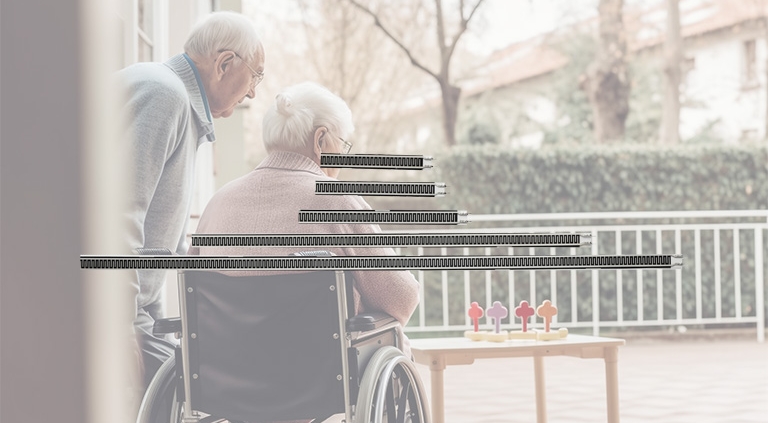As the global population ages, the demand for high-quality elderly care is increasing. Nursing homes play a critical role in providing comprehensive care for the elderly. Integrating modern technology, such as thin-film pressure sensors, into nursing home projects can significantly enhance the quality of care, safety, and overall well-being of residents. Thin-film pressure sensors offer high sensitivity, flexibility, low cost, and ease of installation, making them an ideal choice for various applications within nursing homes.
Working Principle of Thin-Film Pressure Sensors
Thin-film pressure sensors are constructed from flexible materials, usually comprising two conductive films separated by an insulating layer. When pressure is applied, the distance between the films changes, causing a variation in electrical resistance. This change is detected and measured, allowing for precise monitoring of pressure distribution and intensity.
Benefits of Thin-Film Pressure Sensors in Nursing Homes
- Accurate Pressure Monitoring: Thin-film pressure sensors can detect subtle changes in pressure, providing accurate data on the distribution and magnitude of pressure points. This is essential for monitoring the conditions of bedridden residents and preventing pressure ulcers.
- Flexibility and Comfort: The sensors’ flexible nature allows them to be seamlessly integrated into various surfaces, such as beds and chairs, without compromising comfort. This ensures that residents can rest comfortably while being continuously monitored.
- Cost-Effectiveness: Compared to traditional pressure sensors, thin-film pressure sensors are more affordable, making it feasible to implement them across multiple applications within a nursing home setting.
- Ease of Installation: The lightweight and thin design of these sensors allows for easy installation on different surfaces. They can be embedded within mattresses, cushions, and flooring or attached to the surface of these items without requiring complex installation procedures.
Applications of Thin-Film Pressure Sensors in Nursing Homes
- Bed Monitoring Systems: Thin-film pressure sensors can be integrated into mattresses to monitor residents’ movements and pressure points. This helps in preventing bedsores by alerting caregivers when a resident needs to be repositioned. Additionally, it can monitor sleep patterns and provide data to improve the overall comfort and health of the residents.
- Fall Detection and Prevention: Sensors embedded in the flooring or in wearable devices can detect falls by monitoring sudden changes in pressure. In case of a fall, the system can immediately alert caregivers, ensuring prompt assistance and reducing the risk of serious injuries.
- Chair and Wheelchair Monitoring: Similar to bed monitoring, thin-film pressure sensors can be used in chairs and wheelchairs to monitor sitting posture and pressure distribution. This helps in preventing pressure sores and ensuring that residents are seated comfortably and safely.
- Mobility Assistance: Thin-film pressure sensors can be incorporated into walking aids, such as canes and walkers, to monitor the pressure applied by the user. This data can help in assessing the resident’s mobility and identifying any issues that may require intervention.
- Health and Safety Alarms: Thin-film pressure sensors can be part of a comprehensive health monitoring system that includes temperature, humidity, and heart rate sensors. This system can provide real-time data and alert caregivers to any anomalies, ensuring the health and safety of the residents.
Future Prospects
The integration of thin-film pressure sensors in nursing homes is poised to revolutionize elderly care. As sensor technology continues to advance, the accuracy, reliability, and versatility of these sensors will improve, making them even more effective. Future innovations may include the combination of pressure sensors with other types of sensors to create a holistic monitoring system that can track a wide range of physiological parameters.
Moreover, the data collected from these sensors can be analyzed using artificial intelligence and machine learning algorithms to provide predictive insights and personalized care plans for residents. This can significantly enhance the quality of care, reduce the risk of health complications, and improve the overall well-being of elderly residents.
Conclusion
Thin-film pressure sensors offer a promising solution for enhancing the quality of care in nursing homes. Their high sensitivity, flexibility, cost-effectiveness, and ease of installation make them suitable for various applications, from bed monitoring and fall detection to mobility assistance and comprehensive health monitoring. As technology continues to evolve, the integration of thin-film pressure sensors in nursing homes will become increasingly prevalent, providing safer, more efficient, and personalized care for the elderly.


